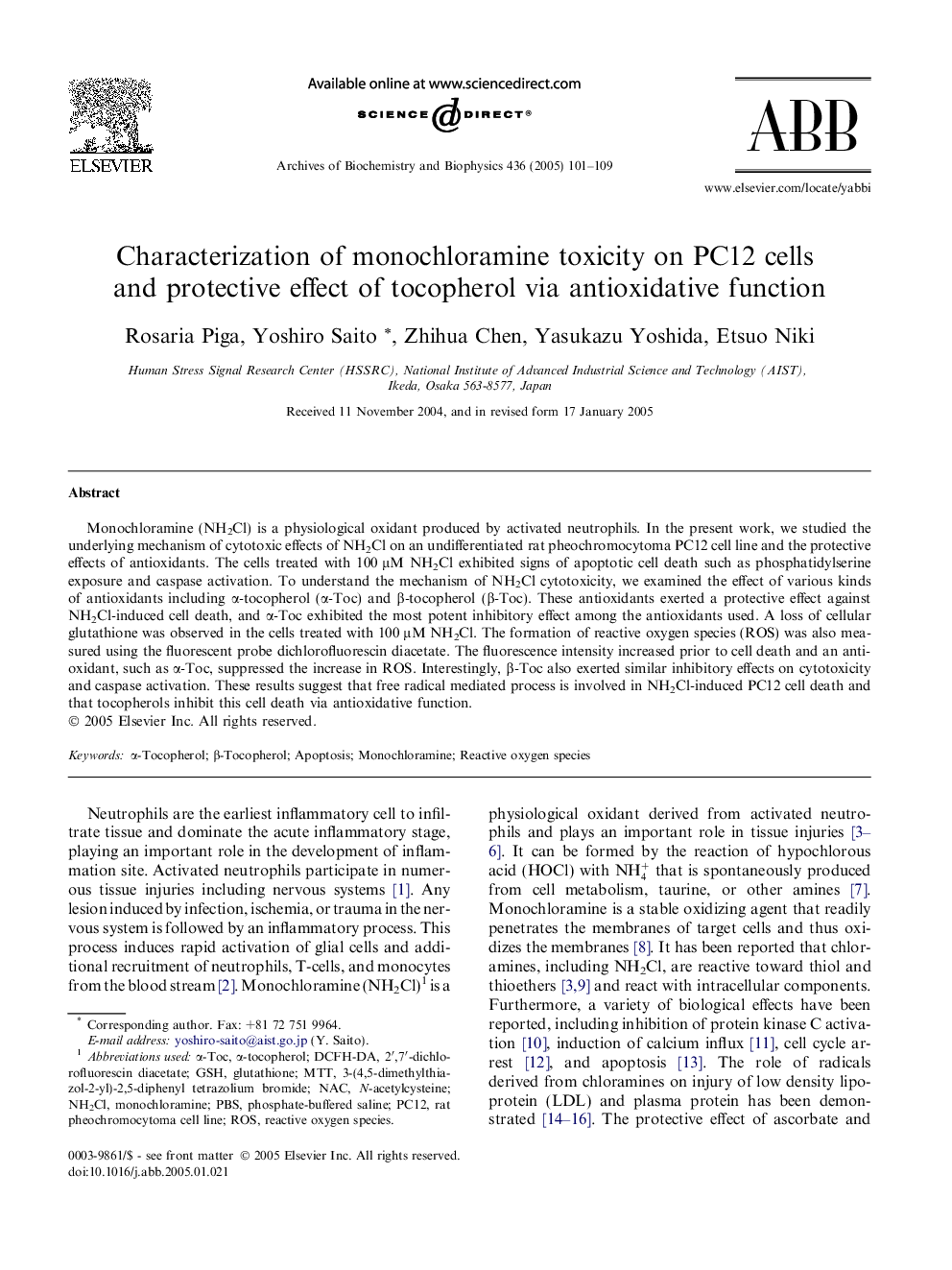| Article ID | Journal | Published Year | Pages | File Type |
|---|---|---|---|---|
| 9882271 | Archives of Biochemistry and Biophysics | 2005 | 9 Pages |
Abstract
Monochloramine (NH2Cl) is a physiological oxidant produced by activated neutrophils. In the present work, we studied the underlying mechanism of cytotoxic effects of NH2Cl on an undifferentiated rat pheochromocytoma PC12 cell line and the protective effects of antioxidants. The cells treated with 100 μM NH2Cl exhibited signs of apoptotic cell death such as phosphatidylserine exposure and caspase activation. To understand the mechanism of NH2Cl cytotoxicity, we examined the effect of various kinds of antioxidants including α-tocopherol (α-Toc) and β-tocopherol (β-Toc). These antioxidants exerted a protective effect against NH2Cl-induced cell death, and α-Toc exhibited the most potent inhibitory effect among the antioxidants used. A loss of cellular glutathione was observed in the cells treated with 100 μM NH2Cl. The formation of reactive oxygen species (ROS) was also measured using the fluorescent probe dichlorofluorescin diacetate. The fluorescence intensity increased prior to cell death and an antioxidant, such as α-Toc, suppressed the increase in ROS. Interestingly, β-Toc also exerted similar inhibitory effects on cytotoxicity and caspase activation. These results suggest that free radical mediated process is involved in NH2Cl-induced PC12 cell death and that tocopherols inhibit this cell death via antioxidative function.
Related Topics
Life Sciences
Biochemistry, Genetics and Molecular Biology
Biochemistry
Authors
Rosaria Piga, Yoshiro Saito, Zhihua Chen, Yasukazu Yoshida, Etsuo Niki,
